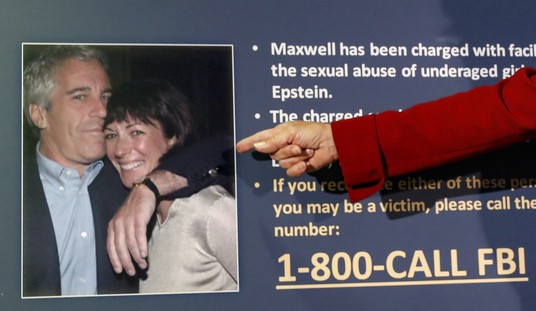In my earlier analysis of the latest WaPo/ABC poll, I noted that the news from the generic Congressional ballot looks surprisingly good for Republicans. The Post’s Aaron Blake also noticed it, with some surprise, and also that it fits in remarkably well with other generic-ballot polling. Despite widespread assumptions that Trump might tank down-ballot races for the GOP, it seems that voters have a more discerning eye in 2016 than usual:
Of the four high-quality mainstream media polls conducted since that “Access Hollywood” video emerged, Trump has trailed by 11 points, 9 points, 7 points and 4 points. And even that last, closest poll, from The Washington Post and ABC News on Sunday, includes some big red flags for Trump.
But those same polls don’t suggest doom and gloom for downballot Republicans just yet. And in fact, there’s real reason for GOP optimism that Trump won’t ruin their year completely.
For one, the so-called generic ballot — i.e., whether people prefer a generic Democrat for Congress or a generic Republican — still only favors Democrats by a small margin: 3 points in both the Post-ABC poll and NBC News-Wall Street Journal poll, among likely voters. That same Democratic edge on the generic ballot is actually down from 6 points in last week’s NBC-WSJ poll.
Trump could also bounce back. This cycle has featured unusually dramatic swings in polling, and it might come down to which campaign gets the last breaking oppo-research viral hit. Politico argued earlier today that Trump could still shock the world with his “nativist populism.” Call it the Brexit argument, that has gone on ad infinitum since pollsters missed that call in the UK:
Almost everyone was proved wrong by the massive turnout of Brexitvoters, who had been derided by established politicians as loons and racists and who were not expected to be organized, especially at the polling stations. “Leave” won 52 percent of the vote across the U.K., and nearly 54 percent in England. This figure rocketed higher in poorer industrial and rural communities that had been cut adrift by globalization and felt under threat from unprecedented levels of immigration—the analogue to many Trump voters today (as even Trump himself has suggested, tweeting that he would soon be known as “Mr. Brexit”). Support for Brexit reached striking levels among those same groups of voters who are now backing Trump—nearly 60 percent among voters on low incomes, over 70 percent among manual workers and 75 percent among people with no qualifications. In forgotten England, the anti-elite and anti-immigration message had spread like wildfire. The left behind mobilized in a big way.
Turnout rates among poorly educated white voters threw cold water on the earlier claim that the angry white man would not show up, that he would be pushed aside by young cosmopolitans and the big cities. Overall turnout was high, at 72 percent, the highest for any U.K.-wide vote since 1992. Subsequent analysis of how this affected the vote suggests that Brexit won by mobilizing people who never normally vote, something that Trump hopes to emulate. The unexpectedly high turnout, especially in blue-collar communities, is why turnout models in the polls that were based on turnout at previous elections performed poorly; they failed to account for the mobilization of unlikely voters. Turnout was much higher among the Brexit-voting over-55s and strikingly lower among young voters who had promised to vote. Some estimate that whereas 64 percent of young people who were registered to vote did vote, this figure was 74 percent among people ages 55 to 64 and 90 percent among those ages 65 and above.
However, Matthew Goodwin concedes in his closing, the problem is that the US presidential and Brexit electorates look very differently, especially in key demos:
The electoral college stacks the deck against the Republicans; there is a sharp gender gap in current voting intention (which was not evident at Britain’s EU referendum); and the Trump candidacy is perhaps the most divisive in modern American history. But at the same time, recent history from across the Atlantic reveals why you should never dismiss the appeal of a populist insurgency, place blind faith in the polls and forecasts nor assume that populist voters will not mobilize when—in their eyes—it matters most.
That actually might complicate matters for House Republicans, according to the NBC/WSJ poll, Blake argues:
And the NBC-WSJ poll might be even more encouraging for Republicans, because it suggests a path forward for them. The poll asked whether registered voters would be more likely to support a congressional Republican who would be a check and balance on Clinton and Democrats, and 53 percent said they would. Just 40 percent preferred a congressional Democrat who would help Clinton pass her agenda.
Aa look at the RCP average for the generic ballot might give the same impression — except for the scale:

Right now the gap is as wide as it’s been, but it’s still only D+5. Democrats have to flip 30 seats to take over the House, which would almost equal their 31-seat win in 2006 to take the majority. The RCP average in that cycle was D+11.5, but CNN, Fox, Time, and Newsweek all had Democrats farther ahead. The 2012 race was a tie in the generic ballot, but Democrats managed to pick up eight seats. Nothing we’re seeing at the moment looks like a wave for Democrats.
Ticket splitting has become less common, Blake argues, but this election has challenged all of the previous paradigms. At least for now, voters appear to view Trump as sui generis, an anomaly rather than part of the GOP team. Paul Ryan’s decision to focus on House races may well pay off.








Join the conversation as a VIP Member